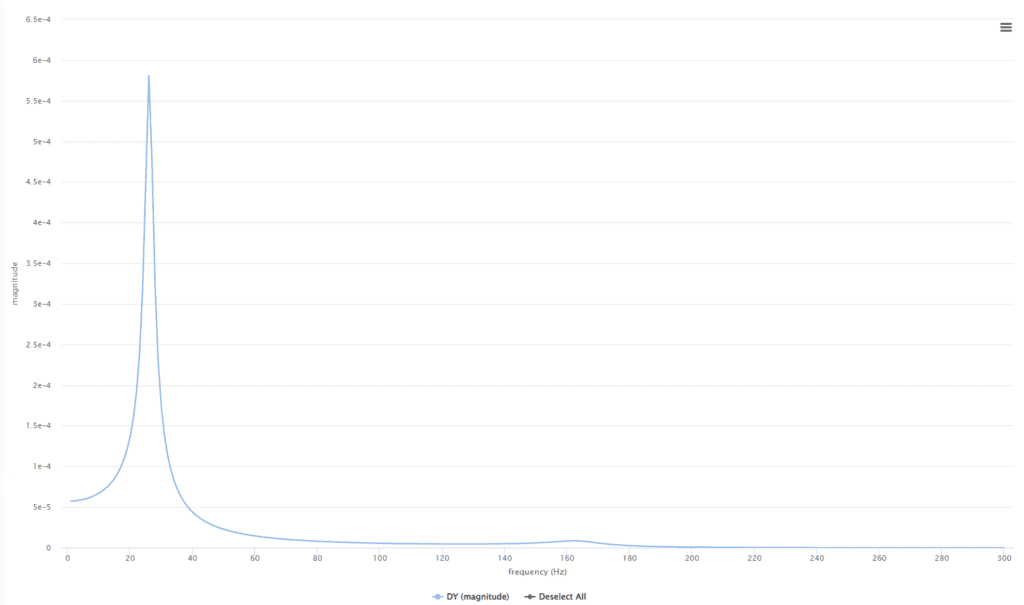Documentation
The Base excitation boundary condition allows to specify a base motion acceleration in a harmonic structural simulation. The acceleration is applied to all the faces that are constrained by means of a Fixed support boundary condition.
The parameters of the boundary condition to be defined are:
$$ \varphi = 2 \pi f \delta $$
Assignments
Notice that this boundary condition, unlike the other ones, does not contain an assignment box. The base acceleration is applied to all the faces assigned to the Fixed support boundary condition. Thus, it is necessary to first define the fixed supports, then create the base excitation.
The following analysis types support the usage of this boundary condition:
The base motion boundary condition can be used in combination, exclusively, with the following boundary conditions:
This exclusivity implies that boundary conditions not listed above can not be used in combination with the base motion, and trying to do so will result in an error message.
It is assumed that a rigid body motion is imposed to the fixed faces, due to the harmonic base excitation. Thus, the total displacement at any point in the structure can be expressed as the sum of a relative displacement with respect to the base and the rigid body motion of the base. The situation is illustrated in Figure 2:
Analytically, this can be expressed as:
$$ X_T(t) = X_B(t) + X_R(t) $$
Which, due to the assumption of linearity in the harmonic analysis, also extends to the velocities and accelerations:
$$ \dot{X}_T(t) = \dot{X}_B(t) + \dot{X}_R(t) $$
$$ \ddot{X}_T(t) = \ddot{X}_B(t) + \ddot{X}_R(t) $$
In other words: one places the model in a frame of reference relative to the moving base, and the above corrections have to be performed in order to retrieve the motion with respect to an inertial frame of reference.
Moreover, all the displacements, velocities and accelerations in the result fields of a simulation under this boundary condition are expressed in the frame of reference relative to the base, and not in an inertial frame of reference. Thus, one has to be careful when comparing the results with other data, for example to experiments sampled with an accelerometer, where the registered values are total and not relative to the base motion.
This boundary condition is intended to evaluate the inertial effects of a structure subject to harmonic base motion, transmitted through the points of support. Some examples of such cases are:
The effects of the inertial loads, developed due to the accelerated base motion, are evaluated in terms of the maximum quantities of interest, same as all steady state harmonic oscillations. That is, the results are expressed in terms of the peak displacement, stress and strains of the structure under the action of the base motion.
The option to scale the base acceleration magnitude as a function of the frequency allows to evaluate the response of the system against a known acceleration spectrum. The peaks in the response vs frequency graph, as measured with a Result control item – Point data, reveal which of the natural frequencies of the system are excited by the base motion, for the given direction of excitation.
To illustrate this, let’s have a look at the tip displacement of a cantilever beam under base excitation:

It can be seen from the figure, that one natural oscillation mode is excited by the base motion and resonance occurs, because of the peak in the frequency response graph. The location of the peak at 24 Hz also informs the value of natural frequency.
Last updated: April 21st, 2023
We appreciate and value your feedback.
Sign up for SimScale
and start simulating now